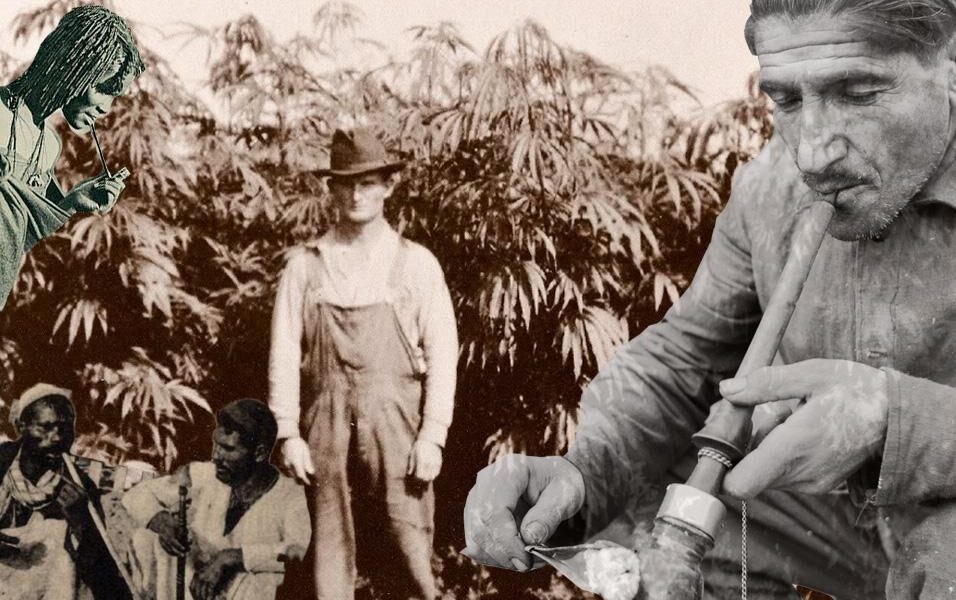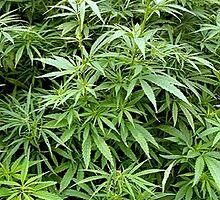In the annals of human history, few plants have sparked as much intrigue and debate as marijuana. From ancient herbal remedies to modern-day recreational use, this versatile plant has woven itself into the fabric of societies across the globe. But how long has marijuana truly been around? To answer this question, we must embark on a journey through time, exploring the rich tapestry of its origins, uses, and cultural significance. As we peel back the layers of this complex history, we uncover not just the timeline of marijuana’s existence, but also its evolution alongside humanity itself. Join us as we delve into the past to understand the enduring relationships we’ve forged with this remarkable plant.
Table of Contents
- The Ancient Origins of Cannabis and Its Early Uses
- Cultural Significance of Marijuana Through the Ages
- The Evolution of Cannabis Legislation Worldwide
- Modern Research and Future Perspectives on Marijuana Usage
- Q&A
- Closing Remarks
The Ancient Origins of Cannabis and Its Early Uses
Cannabis has a rich history that dates back thousands of years, with its earliest recorded use believed to have occurred in Central Asia. Archaeological evidence suggests that the plant was cultivated around 5000 BC, making it one of the earliest domesticated crops. The ancient Scythians, known for their nomadic lifestyle, utilized cannabis seeds and fibers extensively. They would often prepare cannabis for ritualistic purposes, burning it in their ceremonies to achieve altered states of consciousness. Additionally, Chinese texts from as early as 2737 BC mention its use not only as a psychoactive substance but also for various medicinal applications, including pain relief and treatment for ailments like gout and malaria.
The diverse applications of cannabis in ancient cultures reveal its significance beyond recreational use. In Egypt, it was integrated into mummification processes and thought to provide healing properties by warding off evil spirits. Similarly, ancient Indian texts, particularly the Atharva Veda, refer to cannabis as a sacred plant, often using it in religious practices and Ayurvedic medicine. Notably, the marijuana trade routes of the Silk Road facilitated its spread across Asia, leading to the establishment of cannabis as a valuable commodity in various trade markets. This early embrace of cannabis showcases the plant’s multifaceted role in human history, embodying a connection to health, spirituality, and economic exchange.
Cultural Significance of Marijuana Through the Ages
Throughout history, marijuana has woven itself into the cultural and spiritual fabric of many societies. In ancient China, as far back as 2737 BCE, Emperor Shen Nong is credited with documenting its medicinal uses, showcasing its significance in early herbal medicine. Traditions surrounding cannabis spread across various regions, including the Middle East and South Asia, where it was often intertwined with religious practices. Cultures such as the Scythians and Indians revered the plant for its psychoactive properties, using it in ceremonies to connect with the divine. Its multifaceted role in society is reflected in different contexts, such as:
- Ritualistic uses: Employed in spiritual ceremonies and rites.
- Medicinal applications: Recognized for pain relief and healing properties.
- Culinary incorporation: Added to foods and beverages for relaxation and enjoyment.
During the 20th century, marijuana’s portrayal evolved significantly, often influenced by social and political climates. The counterculture movement of the 1960s embraced cannabis as a symbol of rebellion against authority, weaving it into the narratives of freedom and self-expression. Conversely, its criminalization in various parts of the world highlighted the stigma attached to its use, leading to an ongoing dialogue about legality and ethics. In the modern era, as perceptions shift toward acceptance and legalization, the plant’s cultural significance continues to be reshaped. Key themes in the contemporary discourse include:
- Advocacy for reform: Efforts to decriminalize cannabis use.
- Wellness and health: Increasing interest in therapeutic benefits.
- Economic impact: The rise of a new industry surrounding cannabis products.
The Evolution of Cannabis Legislation Worldwide
The journey of cannabis legislation is a compelling story of transformation and adaptation. In the early 20th century, cannabis was widely accepted and used for medicinal purposes across many cultures. However, the mid-century marked a significant shift, leading to stringent regulations in numerous countries, often based on socio-political factors rather than scientific evidence. The reclassification of cannabis as a dangerous drug triggered a wave of legal prohibitions that lasted decades. This period witnessed intense propaganda against cannabis, often underpinned by moral and ethical arguments, which further fueled its negative perception worldwide.
As we entered the 21st century, a notable change began to surface. Several countries and states took a progressive turn toward recognizing the therapeutic benefits of cannabis, initiating a movement toward legalization. Today, legislative frameworks vary greatly, reflecting diverse cultural attitudes and historical contexts. Key developments include:
- Full Legalization: Countries like Canada and Uruguay have adopted comprehensive legal frameworks.
- Decriminalization: Nations such as Portugal have shifted focus from punishment to public health.
- Medical Use Recognition: U.S. states like California have legalized medical cannabis, paving the way for a broader acceptance.
| Country | Legislation Status |
|---|---|
| Canada | Fully Legalized |
| Netherlands | Decriminalized (Limited use) |
| United States | Varies by State (Medical & Recreational) |
Modern Research and Future Perspectives on Marijuana Usage
In recent years, the exploration of marijuana has taken on a new dimension with modern research unveiling a myriad of potential benefits and risks associated with its usage. As scientific inquiry delves deeper into the plant’s various compounds, particularly cannabinoids like THC and CBD, researchers have begun to uncover how these substances interact with the human body. Some studies are focusing on marijuana’s ability to alleviate chronic pain, reduce inflammation, and even mitigate symptoms of anxiety and epilepsy. However, alongside the benefits, there are also discussions about the risks posed by recreational use, including dependency and impairments in cognitive function.
Looking ahead, the future of marijuana research seems promising, with ongoing investigations pushing the boundaries of our understanding. The establishment of legal frameworks and safe testing environments encourages academic institutions and private enterprises to mobilize resources toward clinical trials. Innovations in technology—such as enhanced methods for analyzing terpenes and cannabinoids—are paving the way for custom-tailored treatments that meet individual needs. In this evolving landscape, we may see a robust integration of cannabis in healthcare, potentially optimizing therapies for a spectrum of health issues. The quest for knowledge continues, and it raises significant questions about the role of marijuana in modern society.
Q&A
Q&A: The Timeless Journey of Marijuana
Q: How long has marijuana been around?
A: Marijuana, or cannabis, has a rich history that dates back thousands of years. Archaeological evidence suggests that it has been utilized for various purposes since at least 5000 BCE. Its origins can be traced to Central Asia, where ancient peoples began to cultivate it for its fibers, seeds, and psychoactive properties.
Q: What were some of the earliest uses of marijuana?
A: In its early days, marijuana was primarily valued for its practical applications. The robust fibers of the hemp plant were woven into textiles, ropes, and paper. Its seeds were consumed as food, and the plant was utilized in traditional medicine for its diverse therapeutic properties. Ancient civilizations, including the Chinese and Indians, recognized its value and integrated it into their cultures.
Q: How did its perception change over time?
A: Over the centuries, marijuana has worn many hats, transitioning from a revered medicinal herb to a controversial psychoactive substance. In ancient China, it was considered a gift from the gods, while in India, it played a role in spiritual practices. However, by the early 20th century, shifting social attitudes and political movements began to paint the plant in a negative light, leading to its prohibition in many parts of the world.
Q: When did marijuana become widespread in Western culture?
A: Marijuana made its way to the Western world in the 19th century, mainly through colonization and trade. It gained popularity among artists and intellectuals in the early 20th century but faced a backlash during the prohibition era. The Marihuana Tax Act of 1937 effectively curtailed its legal status in the U.S., pushing its use underground and fostering a complicated relationship with the public.
Q: What is the current status of marijuana?
A: Today, marijuana is undergoing a remarkable renaissance. As of 2023, numerous countries and states have began to legalize its use for both medicinal and recreational purposes. Research into its benefits is expanding, further enriching its narrative as both a historical artifact and a modern-day subject of interest. The global perspective on marijuana continues to evolve, reflecting changing societal norms and scientific understanding.
Q: Will marijuana remain a topic of debate in the future?
A: It seems likely. As more regions consider legalization and as research sheds light on its effects and benefits, discussions surrounding marijuana will remain dynamic. Factors including public health, legal implications, and social acceptance will all play a role in shaping the future discourse around this ancient plant. Just as it has evolved through the ages, so too will our understanding of marijuana continue to grow.
—
In exploring the timeline of marijuana, we find a testament to its adaptability, utility, and the evolving perceptions tied to human culture. The journey of cannabis is far from over—it’s merely a chapter in the ongoing story of our relationship with this fascinating plant.
Closing Remarks
the history of marijuana stretches far beyond what many might assume. From its ancient origins in Central Asia to its diverse uses across cultures and eras, this versatile plant has woven itself into the fabric of human civilization. Whether employed for medicinal, spiritual, or recreational purposes, marijuana’s presence has evolved alongside societal changes, evolving perceptions, and legislative shifts. As we continue to explore its many facets, it is crucial to appreciate the intricate tapestry of its past and the potential it holds for the future. With ongoing research and dialogue, we may yet uncover even more layers to this age-old companion, reminding us that understanding our history is key to navigating our paths forward.



